Words + Photos: Josh Thelin
I didn't know what to expect. It was not only my first time in Cuba, but I had heard so much about the flats fishing and the culture (specifically of Havana via music) that l hoped it would live up to my anxiously driven expectations. Before arrival, I arranged an AirBnB in Old Havana for the night before our departure on the boat. This provided not only a less stressful travel day - not concerned with connecting with planes, vans or boats on time - but it also gave me some time in Havana to walk around and soak a little of it in. We were scheduled to be on the live-aboard (mothership) for the remainder of the week.
The evening of our arrival my fishing partner and I got a couple of drinks at El Floridita, a famous bar and favorite of Ernest Hemingway, while live music at the entrance kept people dancing. Then later we sat next to Clive Owen during a relaxed dinner. Once finished, we parted ways for the night and I took the long walk home listening to live music coming out from the various bars and clubs. Stopping at times to listen, I began to see why Havana has long been a place people come to do just this...and the fishing hasn't even started yet.
 (old havana near the main port)
(old havana near the main port)
The Canarreos is a section of cayes, flats, lagoons, and channels, that all interconnect from Cayo Largo westerly towards Isla de la Juventud. Our trip would take us from the most eastern point of Cayo Largo westerly to IDJ. This would be our area of interest and would take us about a week to get from one side to the other and back. As we progress, the geography changes and so does the fishing. At the beginning, in Cayo Largo, it is more recognized as a bonefish and permit area. Then as we move west, we will hit Isla de la Juventud, some of the most famous tarpon water in the Caribbean. With a sprinkling of consistent bonefish waters in all areas, the fishing is always showing you something new.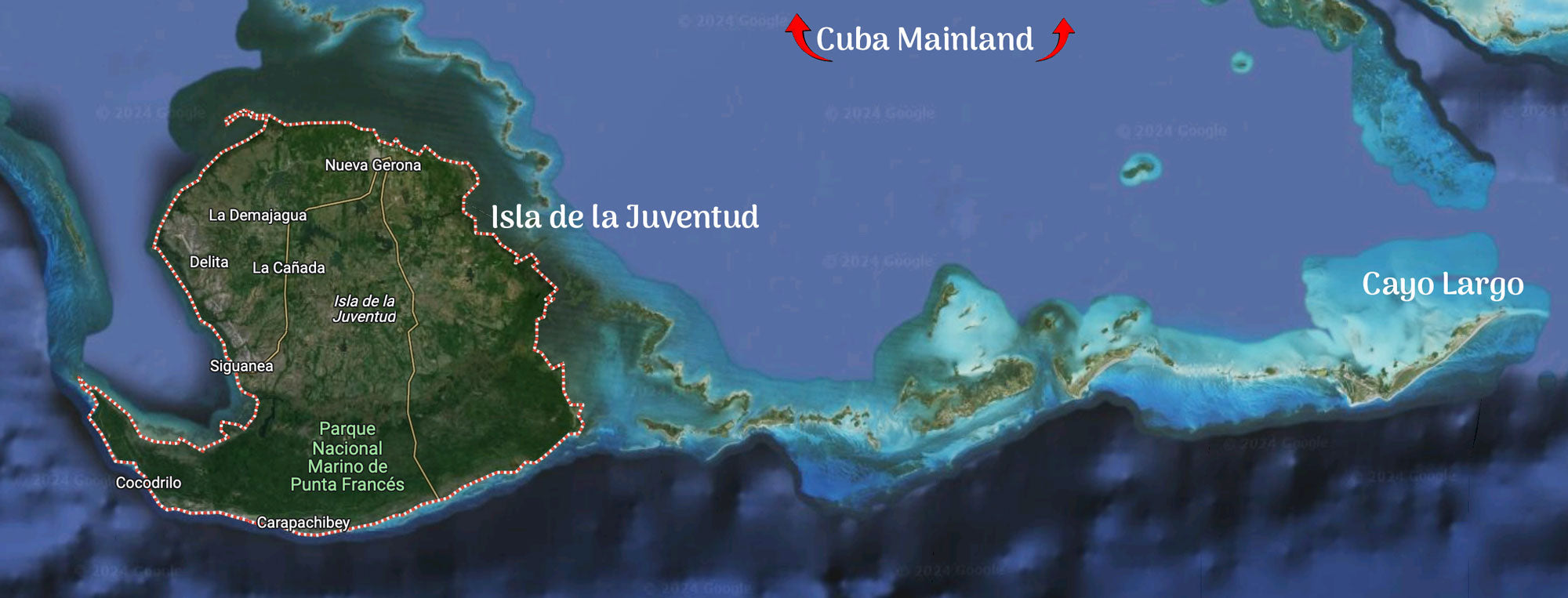 Our first day on the water we hit some great weather conditions. Quality sunlight the entire day and consistent easterly (prevailing) winds gave us an exciting day of feeling like one of us was always on a fish. At times, doubling up on big bonefish really made for a solid kickstart to our trip. Cayo Largo has expansive white sand flats and we ran into large sized bonefish that were happy, not spooky, and willing to take one of our spawning shrimp imitations on a long run well into our backing many times. Permit following stingrays waiting for easy meals gave us some good shots that first day as well, but none were landed.
Our first day on the water we hit some great weather conditions. Quality sunlight the entire day and consistent easterly (prevailing) winds gave us an exciting day of feeling like one of us was always on a fish. At times, doubling up on big bonefish really made for a solid kickstart to our trip. Cayo Largo has expansive white sand flats and we ran into large sized bonefish that were happy, not spooky, and willing to take one of our spawning shrimp imitations on a long run well into our backing many times. Permit following stingrays waiting for easy meals gave us some good shots that first day as well, but none were landed.
As the week continued, we moved our way west towards Isla de la Juventud and catch rates on tarpon seemed to intrinsically increase throughout the group. Those targeting tarpon in the channels and back mangroves reported daily catches on fish in the 10-40lb range. Bonefish continued to be the mainstay however with nice sized fish landed every day. This was true throughout the rest of the trip and was really the biggest take-a-way that I had from the trip in terms of fishing. At times, when the conditions presented themselves, it was some of the most fun bonefishing that I had ever done.
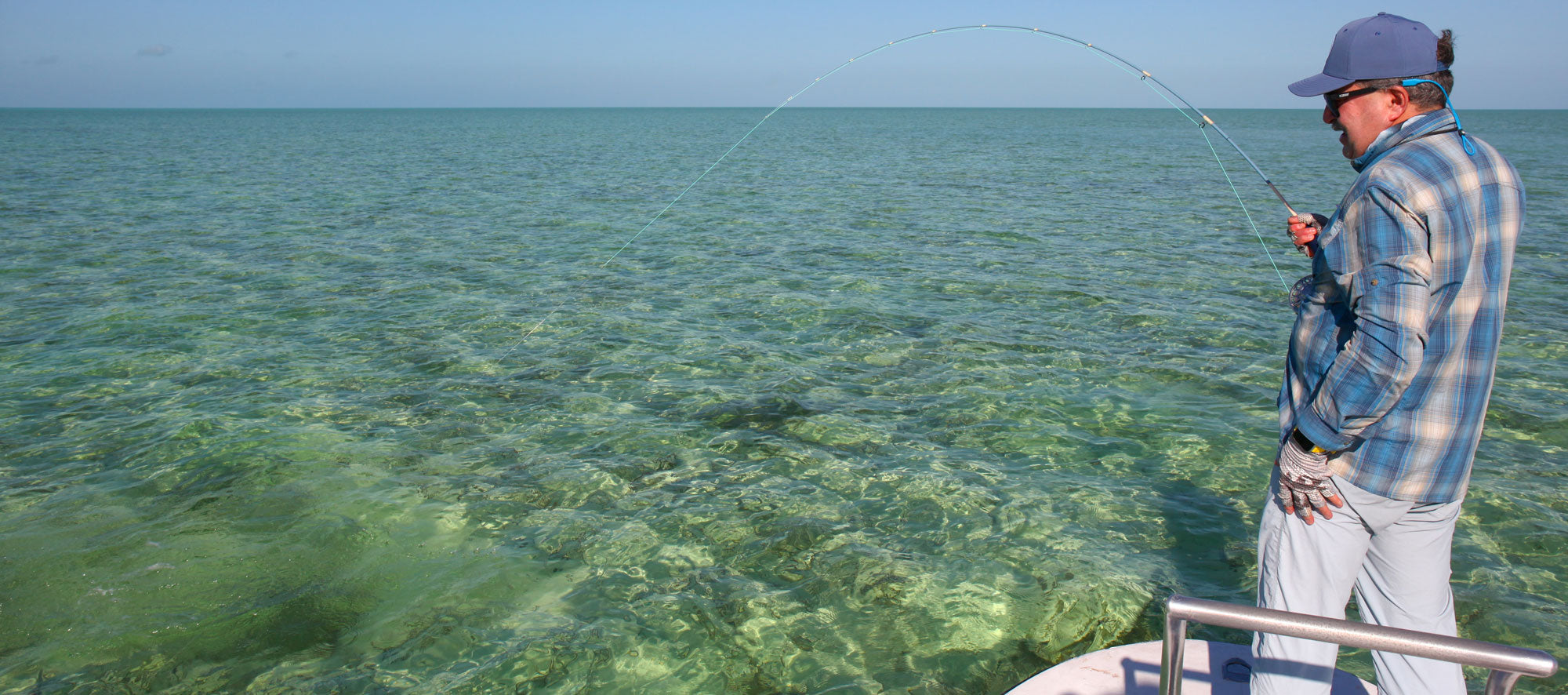 Like most winter weather in the Caribbean, we dealt with days of variable conditions. But conditions were never awful and at times were great. Rain only came one day for a couple of hours in the afternoon, and it was mostly managing the erratic local winds. So all in all, par for the course!
Like most winter weather in the Caribbean, we dealt with days of variable conditions. But conditions were never awful and at times were great. Rain only came one day for a couple of hours in the afternoon, and it was mostly managing the erratic local winds. So all in all, par for the course!
We found that larger shrimp imitations (in the #4-#2 size range) were really the only thing we needed for the bonefish. If it was generally the right size and was some sort of "spawning shrimp" pattern, it would likely be well received. I found that orange (yes its my favorite bonefish and permit color), was also key. At the end of each day, we would meet up with the mothership to where it had made anchor. During the days while we were fishing the boat would make its trip to the next spot for the night. This provided a stationary home base for us to relax, sleep, etc. at the end of the day. Late afternoon/evenings gave us time to tinker with riggings for the next day. A lot of times our guide would tell us to switch out a floating line for an intermediate or sinking, vice-a-versa, or something similar to help us dial-in the specifics for the following day. The flats boats were simply stashed along the shoreline nearby and retrieved in the morning which made for easy and seamless mornings. Further, our morning commutes were never long as the live-a-board was always very close to our spots.
At the end of each day, we would meet up with the mothership to where it had made anchor. During the days while we were fishing the boat would make its trip to the next spot for the night. This provided a stationary home base for us to relax, sleep, etc. at the end of the day. Late afternoon/evenings gave us time to tinker with riggings for the next day. A lot of times our guide would tell us to switch out a floating line for an intermediate or sinking, vice-a-versa, or something similar to help us dial-in the specifics for the following day. The flats boats were simply stashed along the shoreline nearby and retrieved in the morning which made for easy and seamless mornings. Further, our morning commutes were never long as the live-a-board was always very close to our spots.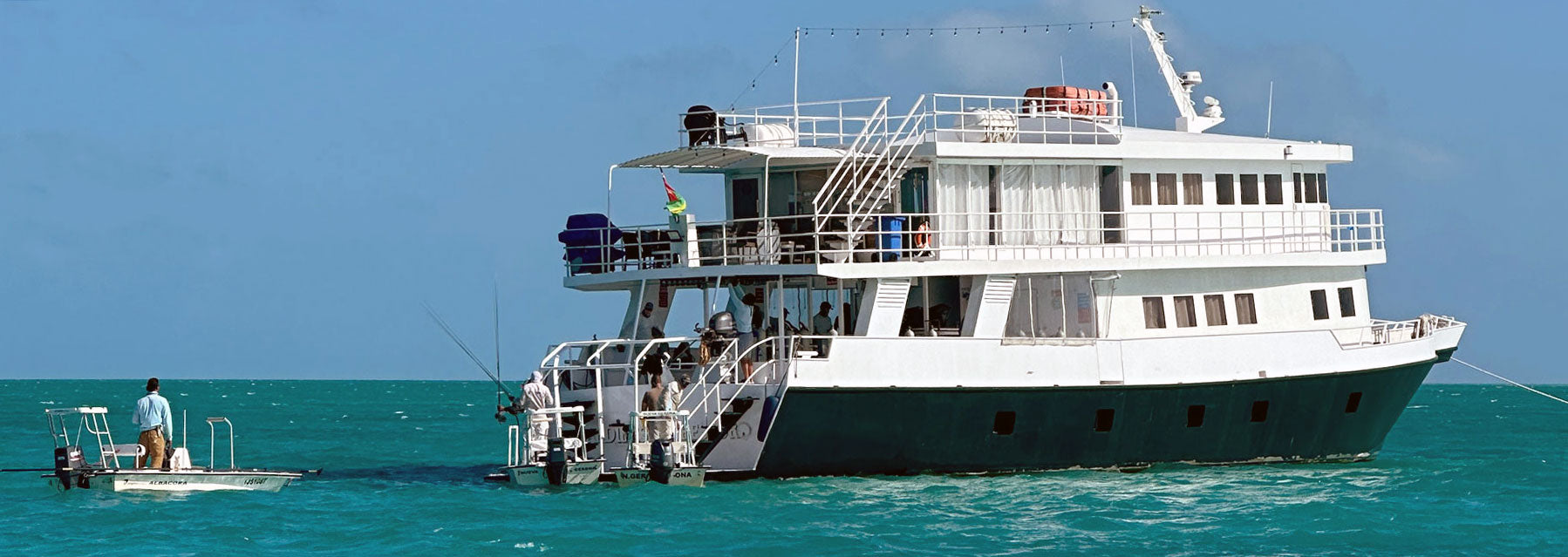 As we worked our way back east towards Cayo Largo during the second half of the week, it was interesting to see and fish some of the waters we had done so previously. On a related note, on a sustainability and conservation side of things, it was encouraging to also see the consistent regulation of laws and standards. For instance most of their fishing water is divided into sections such as Zone 1, Zone 2, etc. On one occasion as we were passing by a flat on our way to another, I spotted a school of tailing bonefish. "Nice school of bonefish over there" I said..."Indeed, but we can't fish there today, that's Zone 6 and we are letting that one rest for a while. Keep the fish happy..." said Frankie our guide.
As we worked our way back east towards Cayo Largo during the second half of the week, it was interesting to see and fish some of the waters we had done so previously. On a related note, on a sustainability and conservation side of things, it was encouraging to also see the consistent regulation of laws and standards. For instance most of their fishing water is divided into sections such as Zone 1, Zone 2, etc. On one occasion as we were passing by a flat on our way to another, I spotted a school of tailing bonefish. "Nice school of bonefish over there" I said..."Indeed, but we can't fish there today, that's Zone 6 and we are letting that one rest for a while. Keep the fish happy..." said Frankie our guide.

We are hosting another trip to Cuba! Join us!
- See the trip details HERE! -
Check out our Instagram video of this trip HERE!

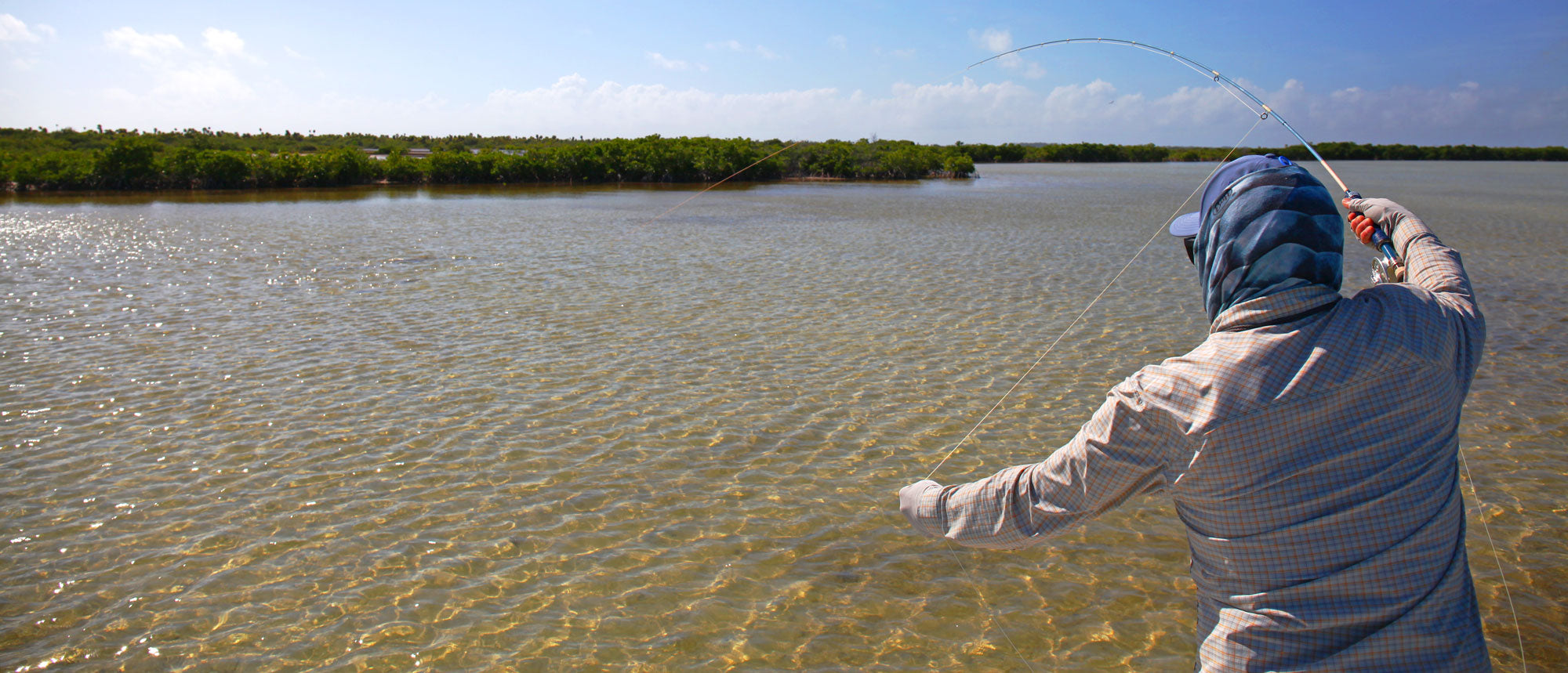

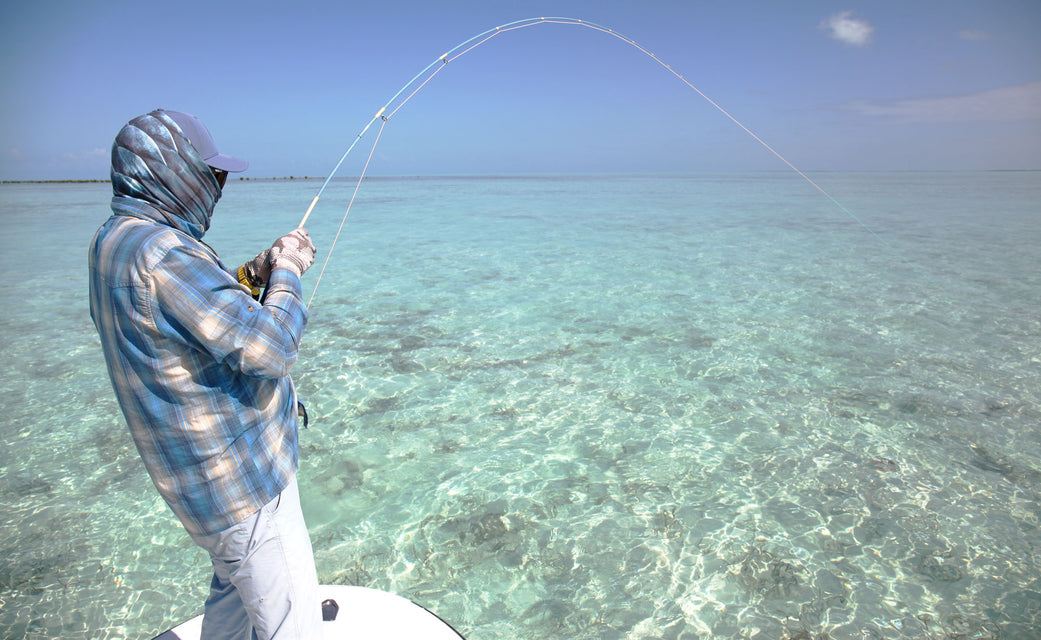










 (Only the strong survive in Labrador. This landlocked salmon looks to have successfully escaped a recent tussle with a Pike)
(Only the strong survive in Labrador. This landlocked salmon looks to have successfully escaped a recent tussle with a Pike)



















